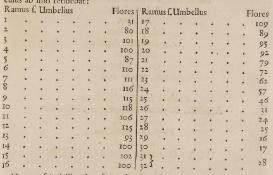In the seventeenth century, the mobility of knowledge arising from contact with the Latin Americas extended beyond Iberia to German scientists. In 1624, German surgeon Jacob Lachmund from the town of Hildesheim wrote down his experiences and observations of new diseases and remedies during his travels to Brazil and Guinea. According to his travel notes, Lachmund served as a physician in an official capacity for Dutch soldiers. Two of Lachmund’s accounts were published posthumously by his son, also a physician, in the Miscellanea curiosa of 1673/74. Other German scientists, such as Johann Elsholtz and Johann Daniel Major, did not physically travel to the Americas, but directly observed new plants, such as the American aloe, in pleasure gardens and botanical gardens throughout Germany. And scientist Christian Metz received American medicinal materials, such as bark from the Laurus americanus tree, in letter correspondence with his colleague Willem Piso, who spent several years in Brazil. My project investigates knowledge networks between the Latin Americas and German scientists in the seventeenth century, asking how German scientists made, understood, and received reports of observations of new diseases and medicines from their own travels and other travelers in the “New World.”
The second part of this project, “Indigenous Medical Knowledge, Theory Building, and Educational Institutes in Sixteenth Century Mexico,” examines the 1552 Libellus de medicinalibus Indorum herbis, which was either written or dictated in Nahuatl by the Nahua physician Martin de la Cruz and then translated into Latin by Juan Badiano, a Nahua elite and professor at Santa Cruz. To what degree was Indigenous medical knowledge accepted, incorporated, or included institutionally at the the College of Santa Cruz and the Royal University of Mexico, and in what ways did Indigenous medical knowledge contribute to theory building there?

